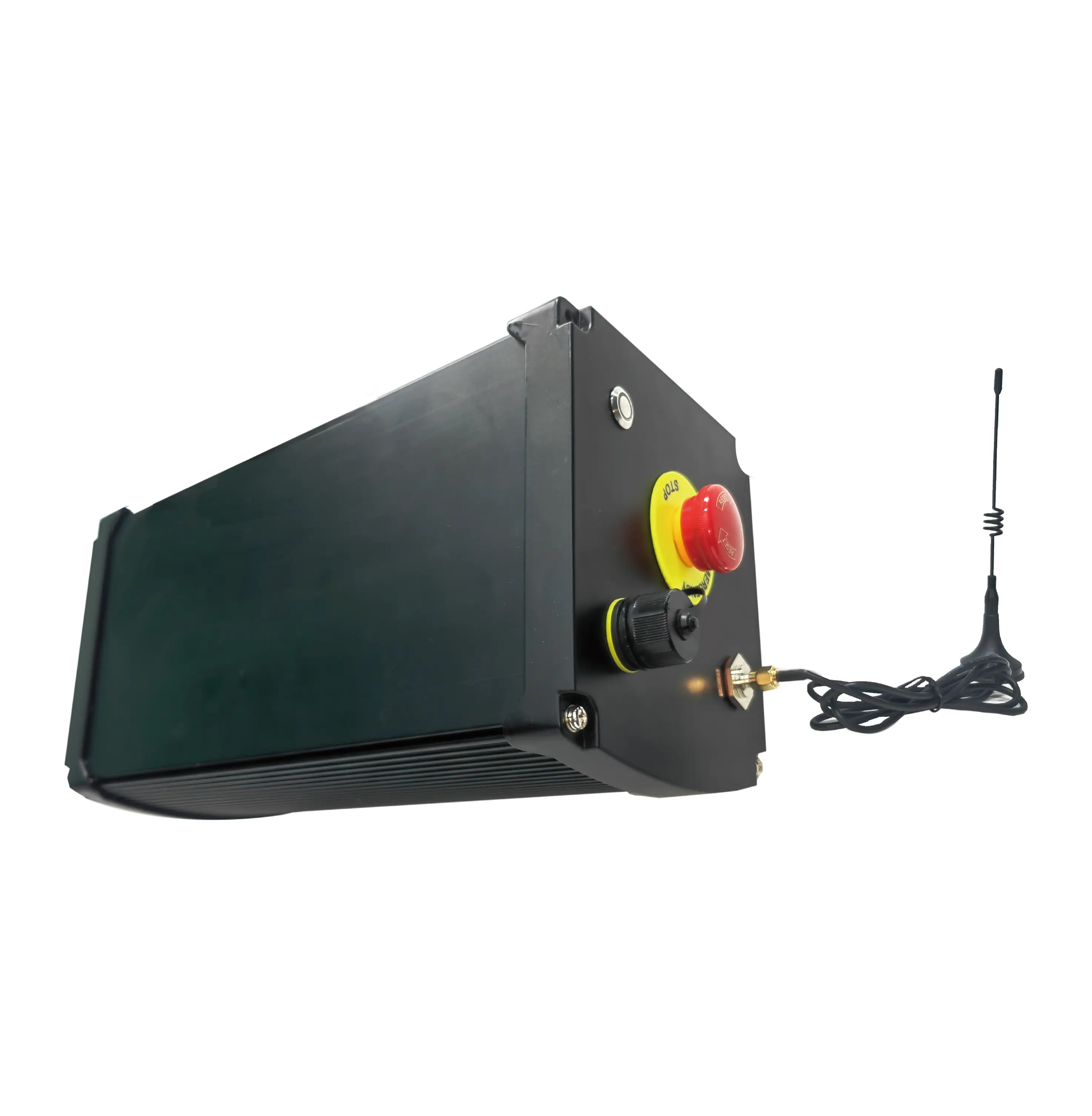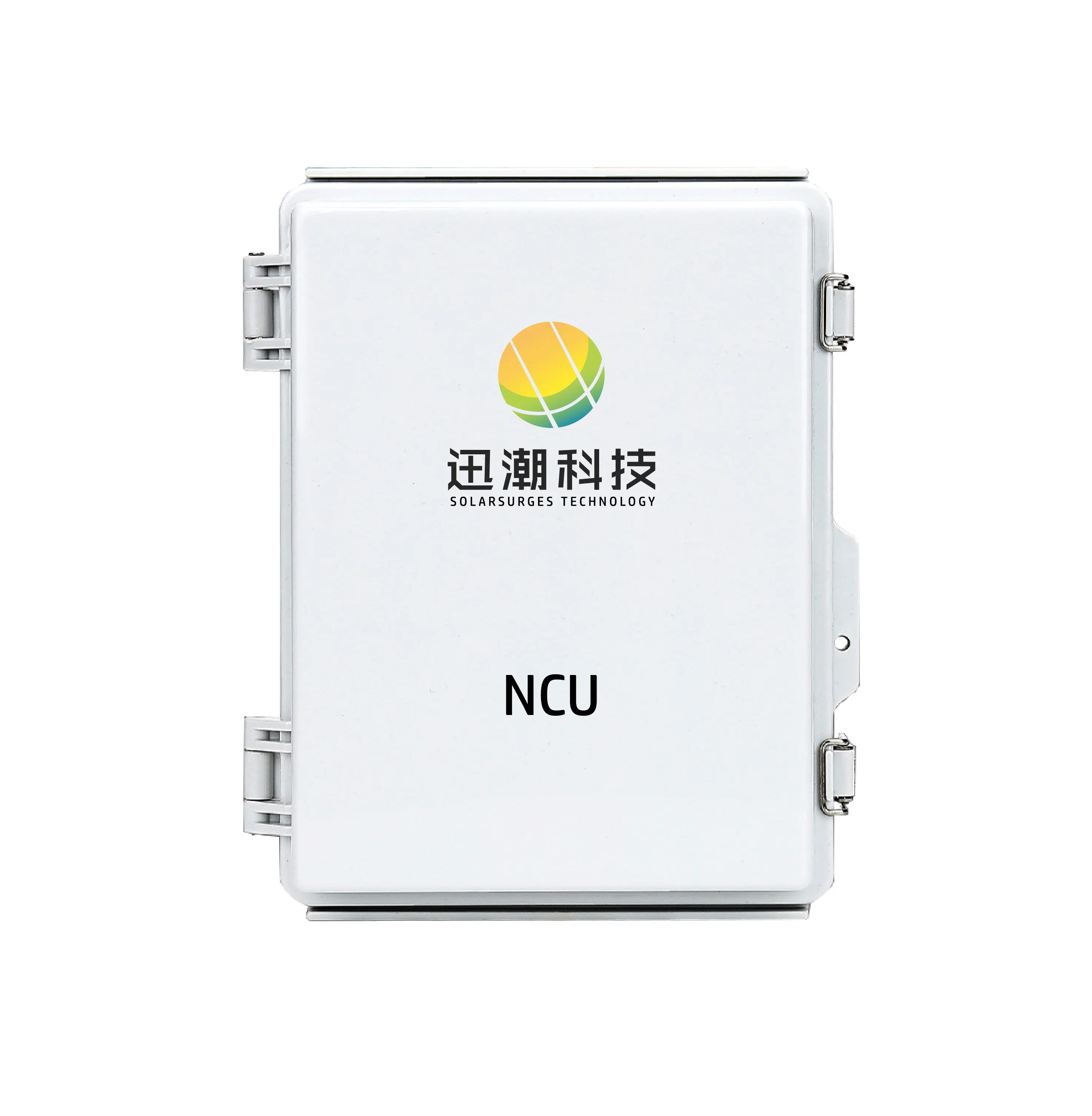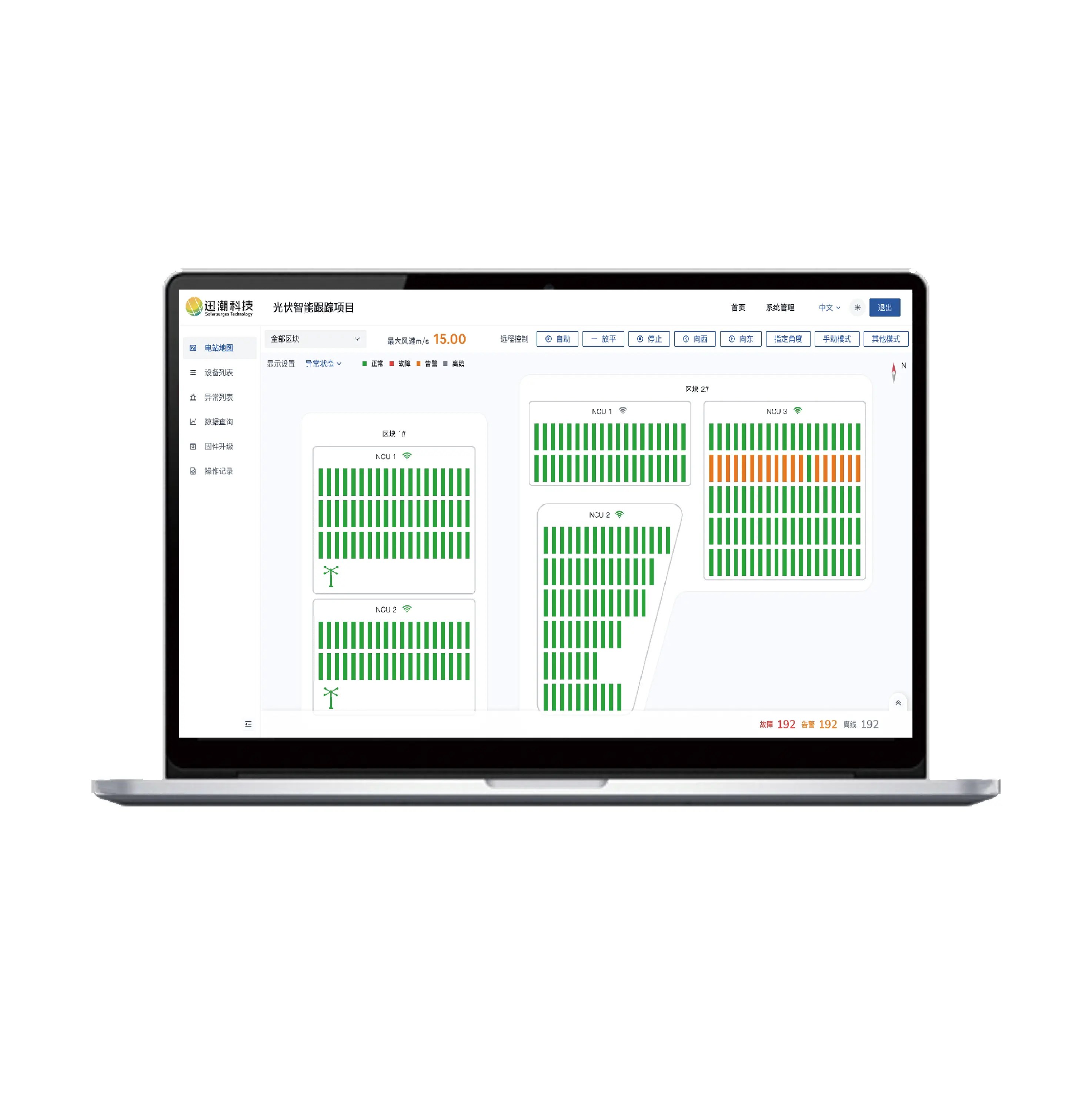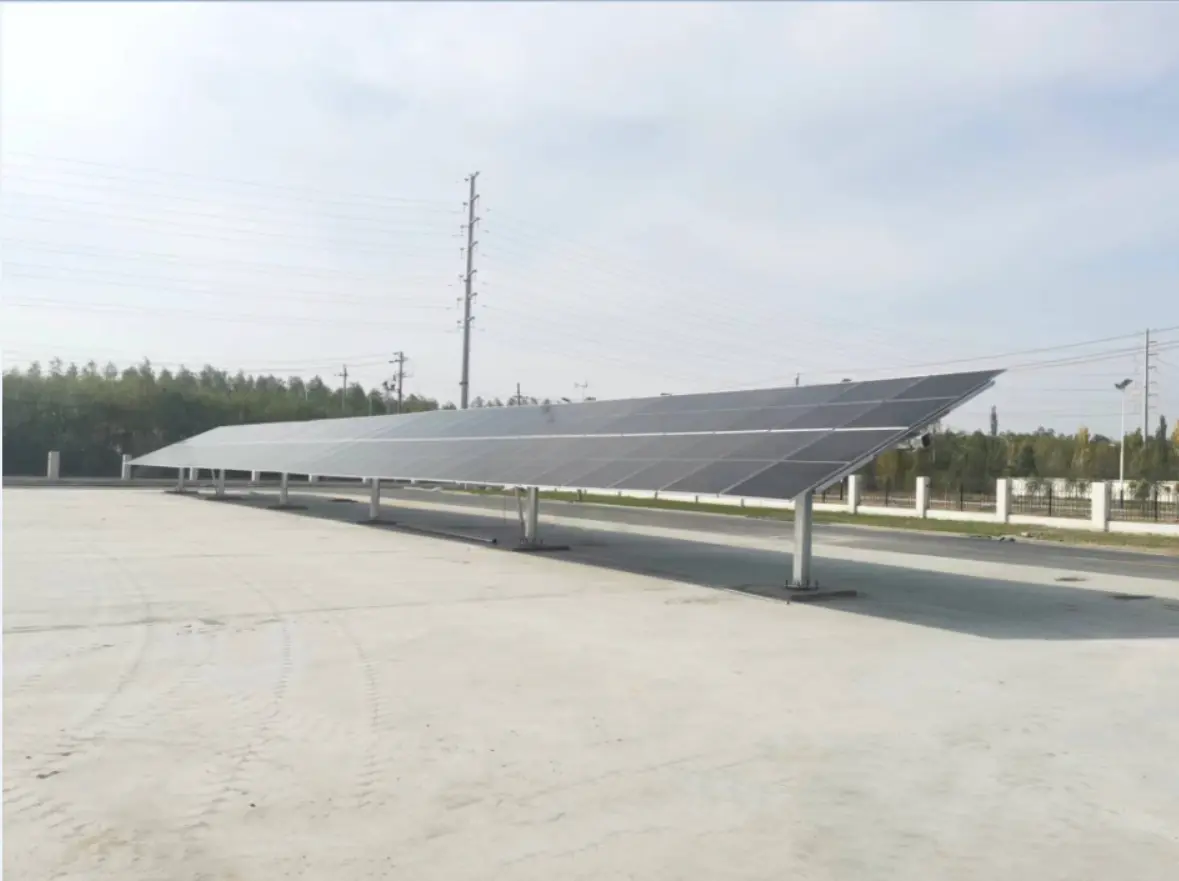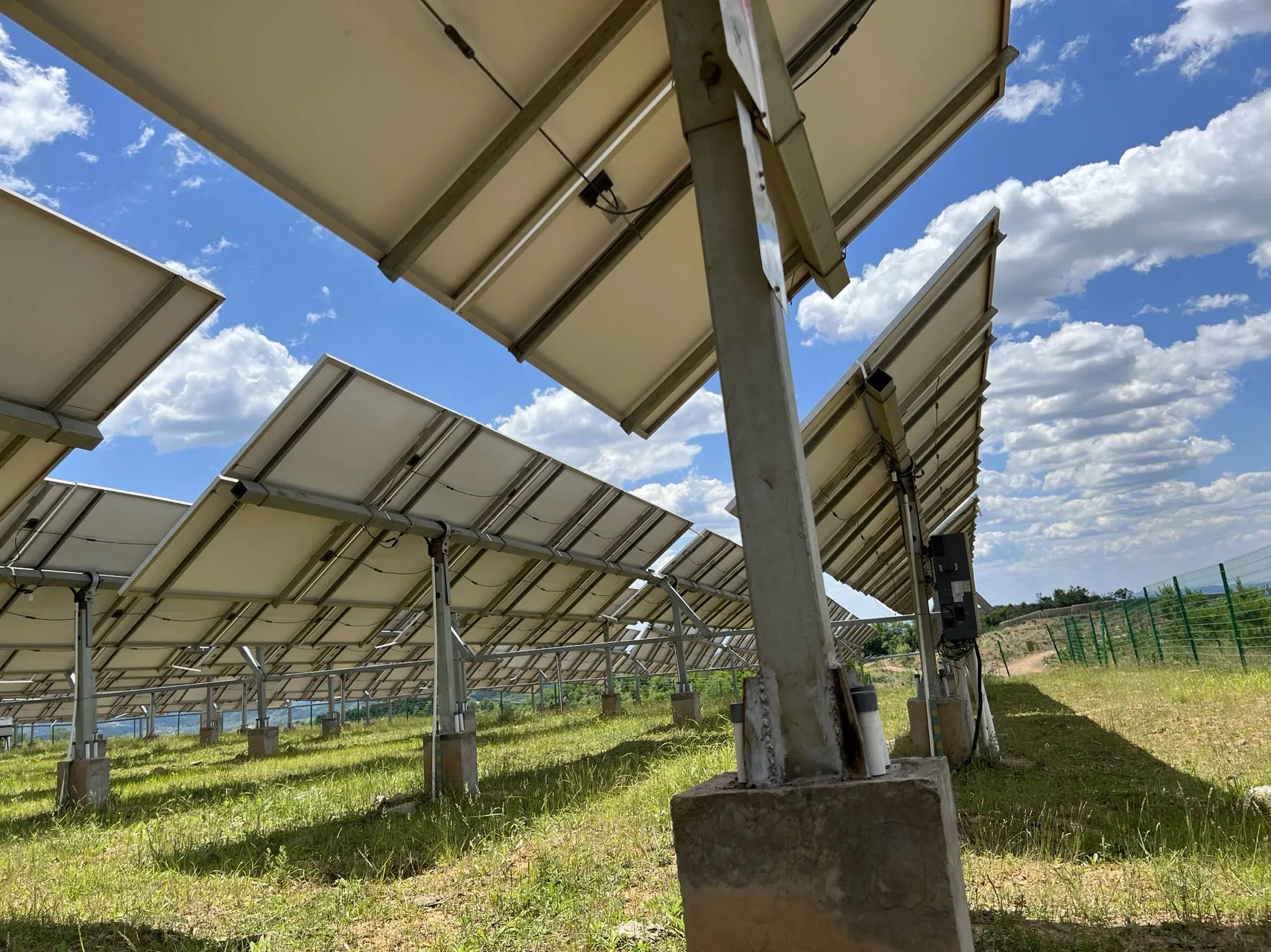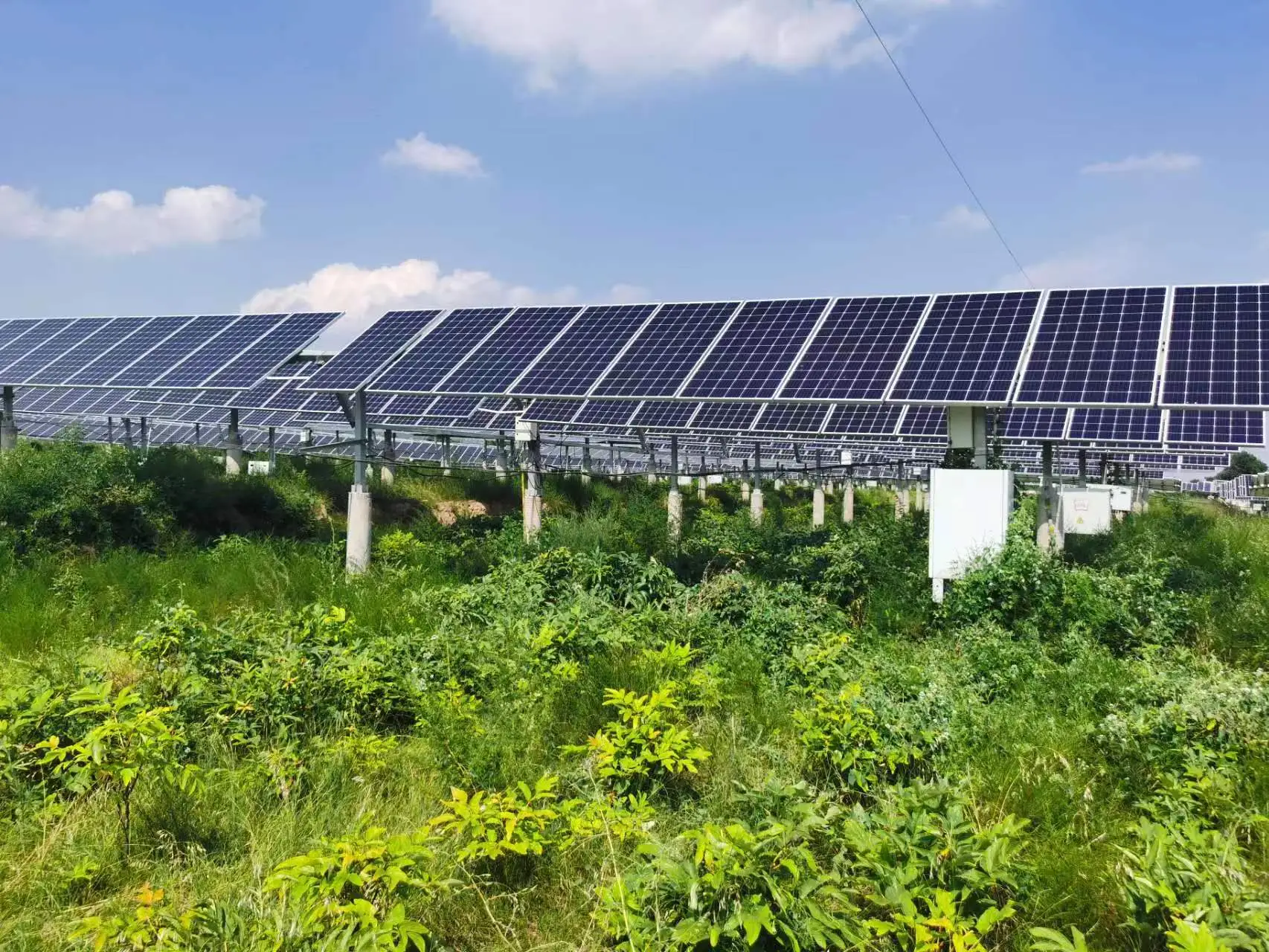Solar tracking technology is a method that adjusts the angle of solar photovoltaic panels or solar thermal devices to always face the sun. The goal of this technology is to maximize solar absorption efficiency, thereby improving energy conversion efficiency. Solar tracking technology simulates the sun's trajectory, dynamically adjusting the orientation and tilt angle of the photovoltaic panels to optimize the light reception of the photovoltaic cells, enhancing the power generation capability of the photovoltaic system.
Types of Solar Tracking Technology
Single-axis tracking system
A single-axis tracking system allows photovoltaic panels to rotate around one axis, usually an east-west or north-south axis. This system can only be adjusted in one direction, enabling the panels to adjust angles based on the sun's movement from east to west. Single-axis systems can generally increase power generation efficiency by 10-25%.
Dual-axis tracking system
A dual-axis tracking system can rotate around two axes, allowing photovoltaic panels to be adjusted both horizontally and vertically. This ensures that the panels can always be perpendicular to the sunlight, significantly improving light absorption rates. In theory, dual-axis systems can increase power generation efficiency by 30-40% compared to single-axis systems. The cost and maintenance difficulty of dual-axis tracking systems are higher, but they can significantly enhance power generation efficiency in areas with unstable sunlight conditions.
Passive tracking system
A passive tracking system uses temperature differences or pressure differences in the natural environment to drive the angle adjustment of photovoltaic panels. This system does not require an external power source and relies on temperature changes or other natural phenomena. Although the efficiency of this system is lower, the maintenance costs are relatively low because there are no electrical drive components.
Smart tracking system
A smart tracking system combines weather forecast data, solar trajectory predictions, and real-time data from solar power plants to optimize the angle adjustments of photovoltaic panels using advanced control algorithms. This system can precisely adjust tracking strategies based on different weather conditions and sunlight intensities, maintaining optimal power generation efficiency in varying environments through intelligent management.
Advantages of Solar Tracking Technology
Improved power generation efficiency
Solar tracking technology enables photovoltaic panels to always remain perpendicular to sunlight, increasing the effective area for solar reception and significantly improving power generation efficiency. Depending on the type of tracking system, power generation efficiency can be increased by 10% to 40%.
Extended power generation time
Photovoltaic arrays using tracking systems can be exposed to sunlight for longer periods, especially in the morning and evening, helping to extend the power generation time of solar power plants and increase total power output.
Land space saving
Since photovoltaic panels with solar tracking technology can maximize solar absorption in a limited space, the required land area can be reduced, thereby lowering land utilization costs.
Optimized light reception
Tracking systems can precisely adjust the angle of photovoltaic panels based on the sun's position, maximizing light reception and reducing light loss caused by fixed panel angles.
High adaptability
Solar tracking technology can be used in various climatic and geographical conditions, especially in areas with significant variability in sunlight intensity or low sunlight angles. It can adjust equipment based on local weather and solar trajectories, adapting to different environmental conditions.
 English
English  中文
中文

